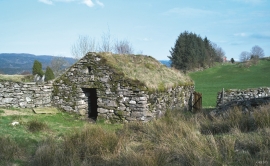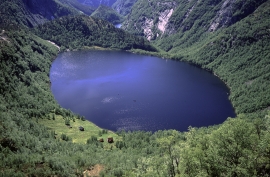- Remove Place filter Place
- Remove Settlements, Villages, Towns filter Settlements, Villages, Towns



Vassel
The small, white-painted schoolhouse at Vassel is a modest, but worthy representative for the school in the rural community – an institution for knowledge and a considerable educator of the people. Many of the small rural schools have been rationalised away, but Vassel has been taken good care of, and on 7 December 1976, Lindås School Museum was opened.



Kringlebotnen
Close to Hummelfossen (waterfall) there is a narrow path leading up the steep mountainside. The path leads to the farm Kringlebotnen, which lies in the mountain, east of the Stormatre valley.

Mollandseid
In Mollandsvågen, close by the river that runs from Mollandsvatnet (lake) into the fjord, are two water-powered circular saws and a mill. This small industrial centre has belonged to the farms Molland, Reknes and Duesund, which together own the rights to the waterfall


Frekhaug
Frekhaug has been a large farm with well-off owners through many generations. The main house, a two storey building with a hipped roof, must have been erected about 1780.

Holmeknappen
If you come by sea to Bergen and come up the Herdle Fjord, the yellow ochre marine shed at Holmeknappen is a well known landmark to starboard as you come close to the little shore settlement. In olden days Holmenknappen served important functions as a centre for a wide hinterland of the surrounding farms, warehouse, landing point, country store and later a steamer quay, a hotel (1896) and a dairy (1909). But today Holmeknappen is no longer a focal point. Transport and commercial routes have changed the old pattern


